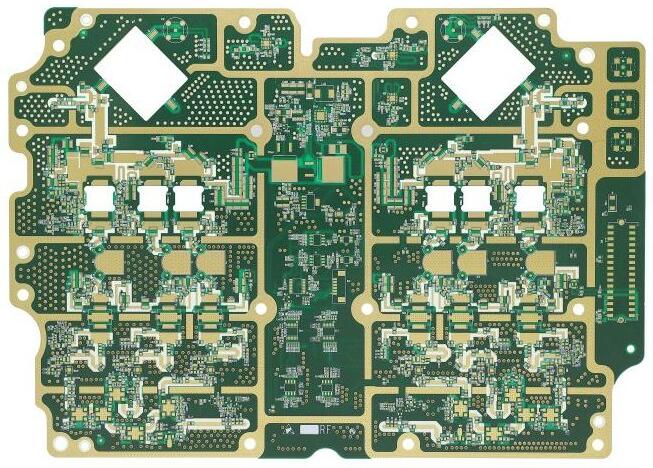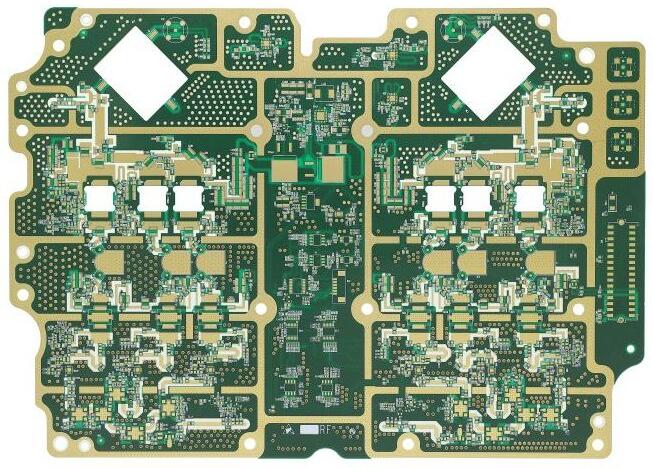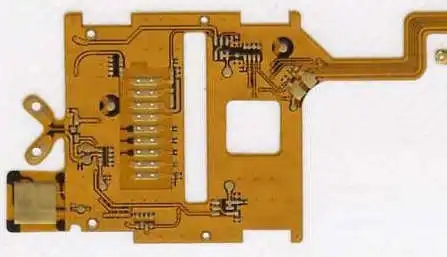
PCB board heat dissipation skills
When it is used for electronic equipment, a certain amount of heat will be generated during operation, which will rapidly increase the internal temperature of the device If the heat is not dissipated in time, the equipment will continue to heat up and become invalid due to overheating Performance will be degraded Therefore, it is very important to have a good heat dissipation treatment for the equipment The heat dissipation of PCB is a very important link. What are the heat dissipation techniques of PCB? Let's discuss them together

1. PCB boards widely used for heat dissipation through PCB itself are copper clad plate/epoxy glass cloth substrate or phenolic resin glass cloth substrate, and a small amount of paper based copper clad plate. Although these substrates have excellent electrical and processing efficiency, their heat dissipation efficiency is poor. As the heat dissipation path of high heat parts, it is almost impossible to expect the heat to be transmitted by the resin of the PCB itself, but dissipate the heat from the part surface to the surrounding air. However, as electronic products enter the era of component miniaturization, high-density installation and high heating assembly, it is not enough to rely only on the surface heat dissipation of components with very small surface area. At the same time, due to the large-scale use of surface mount components such as QFP and BGA, a large amount of heat generated by the components is transferred to the PCB. In this regard, the best way to solve the heat dissipation problem is to improve the heat dissipation capability of the PCB itself that is in direct contact with the heating elements. To make or distribute. Add heat dissipation copper foil, use large area power grounding copper foil thermal through-hole, and expose copper on the back of IC to reduce the thermal resistance between copper sheet and air.
1) The heat sensitive device is placed in a cold air area.
2) The temperature detector is placed at the hottest position.
3) The equipment on the same PCB shall be arranged according to its calorific value and heat dissipation degree as far as possible. The equipment with low heating value or poor heat resistance (such as small signal transistor, small scale integrated circuit, electrolytic capacitor, etc.) is placed at the top of the cooling airflow (at the inlet), and the devices with high heating or good heat resistance (such as power transistor, large-scale integrated circuit, etc.) are placed at the bottom of the cooling airflow.
4) In the horizontal direction, high power devices are arranged as close to the edge of the printed circuit board as possible to shorten the heat transfer path; In the vertical direction, high-power devices are arranged as close to the top of the printed circuit board as possible to reduce the temperature of other devices when these devices are working. Impact
5) The heat dissipation of the printed circuit board in the equipment mainly depends on the airflow. In this design, the airflow path should be studied and the equipment or printed circuit board should be reasonably configured. When the air flows, it always tends to flow in the place with less resistance. It is necessary to avoid leaving large space in a certain area when installing components on the printed circuit board. The same problem should also be paid attention to in the configuration of multiple printed circuit boards in the whole machine.
6) Temperature sensitive equipment should be placed in the area with the lowest temperature (such as the bottom of the equipment). Do not place it directly above the heating device. Multiple equipment should preferably be staggered on a horizontal plane.
7) Place the equipment with the highest power consumption and heat generation near the optimal heat dissipation position. Do not place high heat parts on the corners and edges of the printed circuit board unless a heat sink is set near them. When designing the power resistor, select larger components as far as possible, and adjust the layout of the printed circuit board to have enough heat dissipation space.
2. Add radiator and heat conduction plate on the high heating device. When several devices in the PCB generate more heat (less than 3), you can add a radiator or heat transfer tube to the heating device. When the temperature cannot be reduced, the radiator with fan can be used to enhance the cooling effect. When the number of heating devices is large (more than 3), large heat dissipation covers (plates) can be used, which are special radiators or large flat panel radiators customized according to the location and height of the heating devices on the PCB. Cut out the high and low positions of different parts. Fasten the heat shield on the surface of the components as a whole, and contact the components for heat dissipation. However, due to the poor consistency of components during assembly and welding, the heat dissipation effect is not good. Generally, a soft thermal phase-change heat pad is added on the surface of the component to improve the heat dissipation effect.
3. For equipment cooled by free convection air, it is better to arrange integrated circuits (or other equipment) in vertical or horizontal pipes.
4. Adopt reasonable wiring design to realize heat dissipation. Due to the poor thermal conductivity of the resin in the board, copper foil wires and holes are good thermal conductors. Therefore, improving the residual rate of copper foil and adding new hot holes are the main means of heat dissipation. In order to evaluate the heat dissipation capacity of PCB, it is necessary to calculate the equivalent thermal conductivity of PCB insulating substrate, which is a composite material composed of various materials with different thermal conductivity. At the most upstream (inlet), equipment with high heat generation or good heat resistance (such as power transistors, large-scale integrated circuits, etc.) is located at the most downstream of the cooling airflow.
5. In the horizontal direction, high power devices are arranged as close to the edge of the printed circuit board as possible to shorten the heat transfer path; In the vertical direction, high-power devices are arranged as close to the top of the printed circuit board as possible to reduce the temperature of other devices when these devices are working. Impact
6. The heat dissipation of the printed circuit board in the equipment mainly depends on the air flow. In this design, the air flow path should be studied and the equipment or printed circuit board should be reasonably configured. When the air flows, it always tends to flow in the place with less resistance. It is necessary to avoid leaving large space in a certain area when installing components on the printed circuit board. The same problem should also be paid attention to in the configuration of multiple printed circuit boards in the whole machine.
7. The temperature sensitive equipment should be placed in the area with the lowest temperature (such as the bottom of the equipment). Do not place it directly above the heating device. Multiple equipment should preferably be staggered on a horizontal plane.
8. Place the equipment that consumes the most power and generates the most heat near the best heat dissipation position. Do not place high heat parts on the corners and edges of the printed circuit board unless a heat sink is set near them. When designing the power resistor, select larger components as far as possible, and adjust the layout of the printed circuit board to have enough heat dissipation space.
9. Avoid the concentration of hot spots on the PCB, distribute the power supply evenly on the PCB as much as possible, and maintain the uniform temperature efficiency on the PCB surface In the design process, it is usually difficult to achieve strict uniform distribution, but areas with high power density must be avoided to avoid hot spots affecting the normal operation of the entire circuit If possible, it is necessary to analyze the thermal efficiency of the printed circuit For example, some professionals have added thermal efficiency quota analysis software module PCB package design software to help designers optimize circuit design
The above is the explanation given by the editor of pcb circuit board company. If you want to know more about PCBA, you can go to our company's home page to learn about it. In addition, our company also sells various circuit boards,
High frequency circuit board and SMT chip are waiting for your presence again.







